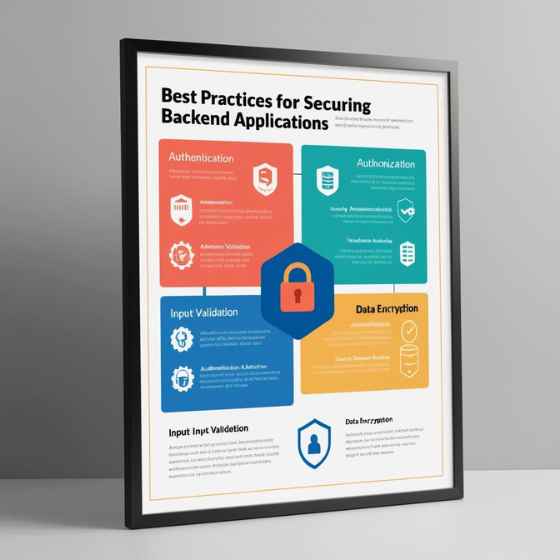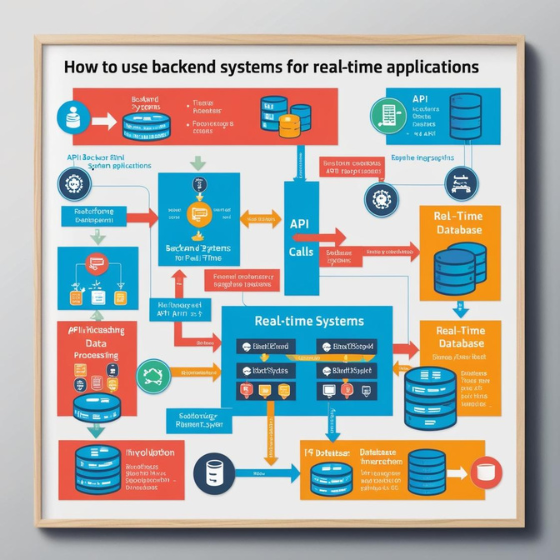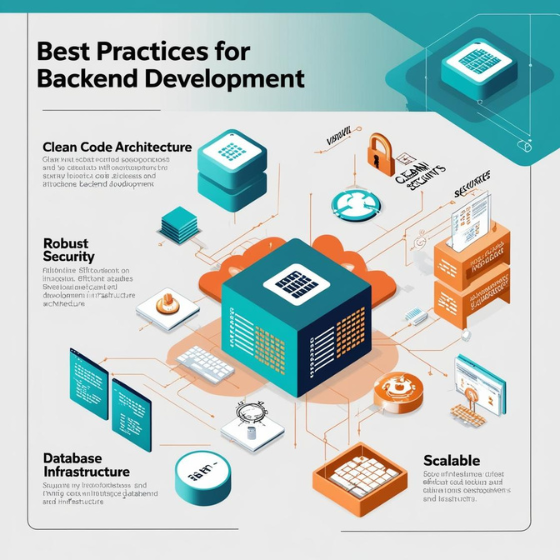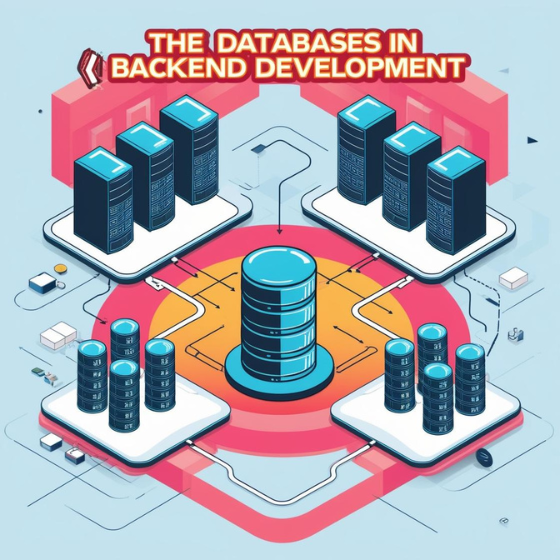How to Secure Backend Applications: A Comprehensive Guide
Introduction
In today’s digital landscape, cybersecurity has become a major concern, especially when it comes to securing backend applications. According to a report from Cybersecurity Ventures, global cybersecurity spending is expected to surpass $200 billion by 2024. This figure highlights the growing importance of securing applications from cyber threats and data breaches. However, while companies are focusing heavily on frontend security, backend security often gets overlooked.
In this blog, we will dive into how to secure backend applications effectively, addressing common vulnerabilities and offering actionable solutions to safeguard your systems. By following the best practices outlined here, you can ensure that your backend remains robust, secure, and ready to handle evolving security challenges. Whether you’re a developer or a business owner, this guide will provide valuable insights into how to secure backend applications and keep your data and users safe.
Understanding Backend Security
Before delving into the specifics of how to secure backend applications, it’s essential to understand what “backend security” entails. The backend of an application refers to the server, databases, and application logic that work behind the scenes to deliver content to the user. Ensuring that this critical infrastructure is secure is paramount, as it holds sensitive data such as user credentials, payment information, and proprietary business data.
Backend security focuses on protecting these server-side elements from attacks, unauthorized access, and data theft. Without proper security measures in place, attackers can exploit vulnerabilities to breach your system and compromise sensitive information. From SQL injection attacks to unencrypted data storage, numerous threats could jeopardize the integrity and security of your backend.
Now that we’ve established the importance of backend security, let’s explore how to secure backend applications.
1. Implement Strong Authentication and Authorization
One of the first steps in how to secure backend applications is to ensure robust authentication and authorization mechanisms are in place. Authentication verifies the identity of users, while authorization ensures that authenticated users have access only to the resources they’re permitted to interact with.
Authentication Strategies:
- Multi-Factor Authentication (MFA): Require users to provide two or more verification factors to access their accounts. This can include something they know (password), something they have (mobile device), or something they are (biometric data).
- OAuth 2.0: Use industry-standard authorization protocols like OAuth 2.0 for securing access to resources via tokens, ensuring that only authorized applications or users can interact with your backend.
Authorization Best Practices:
- Role-Based Access Control (RBAC): Implement RBAC to assign different levels of access based on a user’s role, ensuring that each user can only access specific features or data.
- Least Privilege Principle: Limit access to the minimum necessary resources for users to perform their jobs. This minimizes the potential damage in case of a breach.
By securing your authentication and authorization processes, you reduce the risk of unauthorized access and potential breaches, ensuring that only legitimate users can interact with your backend.
2. Secure Your APIs
Backend applications often communicate with other services via Application Programming Interfaces (APIs). APIs are essential for enabling third-party integrations, mobile apps, and even internal services to interact with your backend. However, if not secured properly, APIs can become a prime target for attackers.
Best Practices for API Security:
- API Authentication: Use strong API keys, OAuth tokens, or JWT (JSON Web Tokens) to authenticate requests and ensure only authorized entities can interact with your APIs.
- Rate Limiting: Implement rate limiting to restrict the number of requests from a single IP address or user within a specific time frame, protecting your backend from brute-force attacks or DDoS (Distributed Denial of Service) attacks.
- Encryption: Always use HTTPS to encrypt data in transit between clients and your APIs, ensuring that sensitive information is protected from eavesdropping.
When you implement these API security measures, you can protect your backend from unauthorized data access, abuse, or service disruption.
3. Encrypt Sensitive Data
Data encryption is one of the most critical steps in how to secure backend applications. Sensitive information such as passwords, credit card details, and personal data must be encrypted both at rest and in transit to prevent unauthorized access and breaches.
Data Encryption Strategies:
- SSL/TLS Encryption: Always use SSL (Secure Sockets Layer) or TLS (Transport Layer Security) to encrypt communication between your users and the server. This ensures that data transferred over the network remains private.
- Database Encryption: Encrypt sensitive data stored in your databases, including user credentials, personal information, and other confidential data. This adds an extra layer of protection in case your database is compromised.
- End-to-End Encryption: For highly sensitive communications (such as messaging apps), implement end-to-end encryption so that data is encrypted at the sender’s end and decrypted only at the receiver’s end, ensuring that no one else can access it.
By encrypting your data, you ensure that even if an attacker gains access to your servers or databases, the data remains unreadable without the encryption keys.
4. Regularly Update and Patch Your Systems
A key aspect of how to secure backend applications is to regularly update and patch your backend systems, including servers, databases, and libraries. Cyber attackers frequently target known vulnerabilities in outdated software, so keeping everything up-to-date is crucial for preventing attacks.
Steps to Keep Your Backend Secure:
- Automate Updates: Use tools to automate the process of applying security patches to your server and application software. This reduces the chances of missing critical updates.
- Monitor Vulnerabilities: Stay informed about potential security vulnerabilities in the frameworks, libraries, and tools you use. Regularly check for advisories and apply patches as soon as they are released.
- Test for Vulnerabilities: Perform regular security audits, vulnerability assessments, and penetration testing to identify any weaknesses in your application or server.
Timely updates and patches play a crucial role in keeping your backend secure from evolving threats and vulnerabilities.
5. Monitor and Log Backend Activity
Another key part of how to secure backend applications is continuous monitoring and logging of activity on your backend. This allows you to detect suspicious behavior and take action before a potential breach occurs.
Monitoring and Logging Best Practices:
- Real-Time Monitoring: Implement real-time monitoring tools that can alert you to unusual activity, such as a spike in traffic or unauthorized access attempts.
- Log All Activities: Ensure that all significant backend activities—such as login attempts, data changes, and API calls—are logged. These logs should be securely stored and regularly reviewed for signs of malicious behavior.
- Intrusion Detection Systems (IDS): Set up IDS to detect potential security breaches or attacks on your backend in real-time.
Regular monitoring and logging allow you to quickly identify and respond to security incidents, minimizing the impact of any potential breach.
6. Secure Your Server and Network Infrastructure
While application-level security is crucial, securing the server and network infrastructure that supports your backend is just as important. Servers, firewalls, and networks must be hardened to prevent unauthorized access and attacks.
Infrastructure Security Best Practices:
- Firewalls: Set up both hardware and software firewalls to block malicious traffic and unauthorized access to your servers.
- Virtual Private Network (VPN): Use a VPN to securely connect your backend infrastructure and restrict access to authorized personnel only.
- Intrusion Prevention Systems (IPS): An IPS actively monitors and blocks suspicious activities on your network, offering an extra layer of defense against attacks.
By securing the underlying infrastructure, you further reduce the risk of unauthorized access to your backend.
Conclusion
In summary, securing backend applications is an essential aspect of modern web development. By implementing strong authentication, securing APIs, encrypting sensitive data, keeping systems updated, and monitoring backend activity, you can significantly reduce the risk of data breaches and other cyber threats.
At Sodio, we specialize in securing backend applications for businesses of all sizes. Our team of experts can help you implement robust security measures tailored to your needs. If you’re looking to enhance the security of your backend applications, explore our services today and get in touch with one of our consultants to start building a more secure future for your business.







